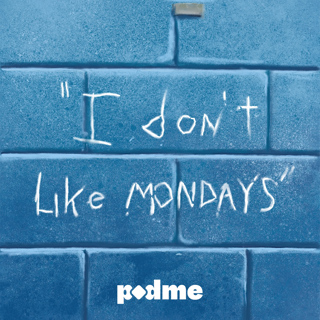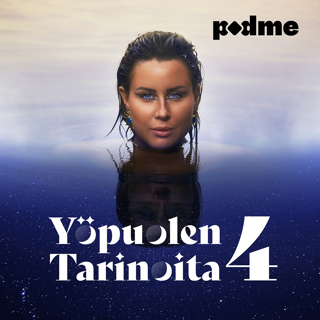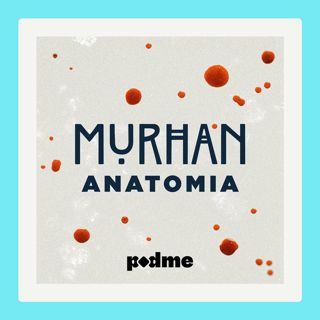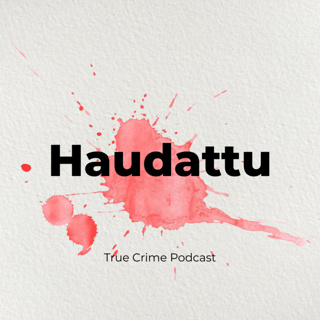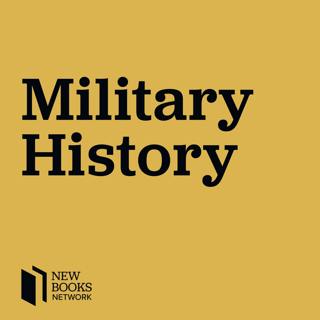
Joan E. Cashin, “War Stuff: The Struggle for Human and Environmental Resources in the American Civil War” (Cambridge UP, 2018)
The Civil War was even more disastrous than we thought. Joan Cashin, already a distinguished scholar of the period, looks afresh at the war through the lens of environmental history and material culture and finds only more terrors and even greater suffering. War Stuff: The Struggle for Human and Environmental Resources in the American Civil War (Cambridge University Press, 2018) draws from a dizzying cache of research from nearly four dozen archives to capture the brutality and desperation of the wars that raged beyond the battlefield—over food, timber, shelter, and the control of people themselves. Most of these struggles were not between the armies, but between soldiers and civilians. Despite Lost Cause slurs against Sherman and his ilk, Cashin finds both armies fully capable of emptying the stores, robbing the woodlots, and torching the homes of white noncombatants. To have two massive armies with nearly inexhaustible appetites for resources crisscrossing the South ensured widespread devastation. But the destruction was all the greater because soldiers on both sides paid little attention to military codes regulating pillage and plunder, and their commanders were usually unwilling or unable to reign them in. So, Cashin argues, the war caused starvation, deforestation, the razing of villages, and an underappreciated amount of hostage-taking and abuse of civilians. After the war, there was no reckoning, no recompense for the toll both armies took on white southerners, and the scars were bandaged with myths that deceive us still. Brian Hamilton is a Ph.D. candidate at the University of Wisconsin–Madison where he is researching African American environmental history in the nineteenth-century Cotton South. He is also an editor of the digital environmental magazine and podcast Edge Effects. Learn more about your ad choices. Visit megaphone.fm/adchoices Support our show by becoming a premium member! https://newbooksnetwork.supportingcast.fm/military-history
28 Syys 201857min

Giulio Ongaro, “Peasants and Soldiers: The Management of the Venetian Military Structure in the Mainland Dominion between the 16th and 17th Centuries” (Routledge, 2017)
Dr. Giulio Ongaro, currently a postdoctoral fellow in the Economics Department at the University of Milan-Bicocca has just published Peasants and Soldiers: The Management of the Venetian Military Structure in the Mainland Dominion between the 16th and 17th Centuries (Routledge, 2017), a fascinating study of the early modern Venetian military. Rather than focus on the city itself or the republic’s higher-profile naval forces, Ongaro examines the workings of the Venetian land forces—its cavalry, militia, and fortress structures. Financing and supplying these forces required increasingly sophisticated administrative measures that, as in so many European states at the time, drove the expansion of state institutions. Most previous studies have assumed that such expansion came at the expense of local power structures and that state administrations existed in competition with local elites. By examining the records of municipal and rural archives in the Venetian hinterland, Ongaro instead shows that while the central state had the power to make demands, those demands were most often satisfied in cooperation with local forces, rather than in competition. Local elites benefitted from the contracts to provision fortresses or supply saltpeter, for example, and so did not resist state directives as a matter of course. This detailed economic history will expand your horizons and your understanding of early modern military history. Learn more about your ad choices. Visit megaphone.fm/adchoices Support our show by becoming a premium member! https://newbooksnetwork.supportingcast.fm/military-history
25 Syys 201830min

Stephen R. Platt, “Imperial Twilight: The Opium War and the End of China’s Last Golden Age” (Knopf, 2018)
The reason for Great Britain’s war against China in the First Opium War (1839-42) is often taken as a given. British merchants wanted to “open” trade beyond the port of Canton (Guangzhou) and continue dealing in the lucrative commodity, opium. Historian Stephen R. Platt’s book, Imperial Twilight: The Opium War and the End of China’s Last Golden Age (Knopf, 2018) proves that the path to war was not so simple. Internal rebellions weakened the Qing military and stretched resources thin. British themselves debated the merits of the Canton system that restricted all Western foreigners and their trade in China to a single port. Some Qing officials considered opium a wholly domestic issue while others considered how best to resolve opium smuggling–by legalizing opium or ejecting foreigners from Canton. Platt traces the narratives of figures who played significant roles in the mounting conflict and identifies lynchpin moments when the history of China and the West could have turned out much differently. Learn more about your ad choices. Visit megaphone.fm/adchoices Support our show by becoming a premium member! https://newbooksnetwork.supportingcast.fm/military-history
24 Syys 20181h 1min

Brian D. Laslie, “Architect of Air Power: General Laurence S. Kuter and the Birth of the U.S. Air Force” (UP of Kentucky, 2017.
We have all seen pictures of the “Big Three” (Churchill, Roosevelt, Stalin) at their historic meeting Yalta in February 1945. The three leaders command the viewer’s attention, naturally, but in the background of the various versions of that photo are other important figures. One can glimpse George Marshall in some. Foreign ministers Eden and Molotov appear in others. American Admirals King and Leahy are there. And so is a U.S. Army Air Force general named Larry Kuter. Not exactly a household name, Kuter was an enormously influential figure, who richly deserves this excellent biography written by airpower expert, Brian Laslie: Architect of Air Power: General Laurence S. Kuter and the Birth of the U.S. Air Force (University Press of Kentucky, 2017). Dr. Laslie is the Deputy Command Historian at NORAD and US Northern Command and the author of another noteworthy book on the U.S. Air Force: The Air Force Way of War: U.S. Tactics and Training after Vietnam (2015), which I can also recommend. Laslie kept encountering Kuter’s name or photo as his work took him to Air Force bases and installations around the world and began to ask questions. Kuter was the co-author of AWPD-1, the first American plan for air war and a strong proponent of daylight, precision strategic bombing. He commanded American forces all over the world, served immediately under Harold George in the postwar Air Transport Command, which gave him responsibility, among other things, for the Berlin Airlift in 1948. He set up the United States Air Force Academy; he commanded NORAD; in retirement, he worked with Pan Am on the 747 project. And there was much more to Kuter’s story, as you can read in Laslie’s book after you enjoy our conversation here. Listeners might also be interested in the author’s blog, Balloons to Drones. Learn more about your ad choices. Visit megaphone.fm/adchoices Support our show by becoming a premium member! https://newbooksnetwork.supportingcast.fm/military-history
14 Syys 201839min

Peter Heather, “Rome Resurgent: War and Empire in the Age of Justinian” (Oxford UP, 2018)
In the 6th century CE, the Roman emperor Justinian embarked upon a series of wars that seemed to herald the restoration of the Roman empire in the western Mediterranean. In his book Rome Resurgent: War and Empire in the Age of Justinian (Oxford University Press, 2018), Peter Heather recounts the campaigns of Justinian’s armies and the factors that made them possible. As Heather explains, the Roman imperial state in the 6th century was one focused mainly upon the waging of war, though for all of the revenue expended upon its armies the eastern Romans had experienced a series of defeats at the hands of their Sassanian Persian rivals to their east. Soon after Justinian took the throne, however, the eastern Roman armies enjoyed a series of successes thanks to the leadership of his most successful commander, Belisarius. While these victories helped define Justinian’s stature as emperor, maintaining them ultimately proved the greater challenge, one that Justinian’s successors were unable to accomplish. Learn more about your ad choices. Visit megaphone.fm/adchoices Support our show by becoming a premium member! https://newbooksnetwork.supportingcast.fm/military-history
10 Syys 201858min

N.A.J. Taylor and R. Jacobs, eds., “Reimagining Hiroshima and Nagasaki: Nuclear Humanities in the Post-Cold War” (Routledge, 2017)
N.A.J. Taylor and Robert Jacobs,’s edited volume Reimagining Hiroshima and Nagasaki: Nuclear Humanities in the Post-Cold War (Routledge, 2017) developed out of a special journal issue of Critical Military Studies organized on the occasion of the 70th anniversary of the atomic bombings of Hiroshima and Nagasaki. Taylor and Jacobs have gathered a subtly interwoven set of papers that together offer a distinctly post-Cold War perspective Hiroshima and Nagasaki—not just the bombings, but their long, continuing aftermaths. At various levels of granularity and expansiveness, the contributors present a diverse set of approaches and findings in what the editors describe as the “exciting new field of Nuclear Humanities.” The contributions to this volume are arrayed along five “pathways” laid out by the editors in their introduction: “testimony from lived experience;” “memorialization and commemoration;” “ordinary people’s resentment, suffering, and forgiveness;” the long-term and universal effects of nuclear weapons; and the transdisciplinary exchanges that characterize Nuclear Humanities. Learn more about your ad choices. Visit megaphone.fm/adchoices Support our show by becoming a premium member! https://newbooksnetwork.supportingcast.fm/military-history
5 Syys 20182h 2min

Gerald Gems, “Sport and the American Occupation of the Philippines: Bats, Balls, and Bayonets” (Lexington Books, 2016)
Today we are joined by Gerald Gems, Professor of Kinesiology at North Central College in Naperville, Illinois, and the author of several books on sports history including Sport in American History: From Colonization to Globalization (2017), Sport and the American Occupation of the Philippines (2016), and Blood and Guts to Glory: A History of Sports (2014). Gems is also the former president of the North American Society for Sport History, the former vice-president of the International Society for the History of Physical Education and Sports, and a former Fulbright Scholar. In Sport and the American Occupation of the Philippines: Bats, Balls, and Bayonets (Lexington Books, 2016), Gems explores the history of sport during the US occupation of the Philippines. Based on extensive primary and secondary source research, Gems work uses hegemony theory to investigate how and why American colonizers imported ideas about sports to the Philippines, and in what circumstances Filipinos adopted, adapted, rejected these sporting practices. He shows that American politicians, military planners, missionaries, and businessmen saw sports like baseball and basketball as essential for keeping soldiers physically and morally fit, while teaching American values including capitalism, militarism, and work ethic. Filipino sportsmen and women played some American sports, first baseball and later basketball, but on their own terms. For many Filipino athletes, sports became a way to assert Filipino nationalism. When they played basketball against US soldiers, they overcame American height advantages by developing a fast paced style and they likened their victories to the rapid strikes of Filipino guerrillas against the occupying forces. Gem’s work has resonance beyond the Philippines and will be interesting reading for scholars studying the translation of American ideas in similar colonial contexts. Learn more about your ad choices. Visit megaphone.fm/adchoices Support our show by becoming a premium member! https://newbooksnetwork.supportingcast.fm/military-history
14 Elo 201856min

Nick Dybek, “The Verdun Affair: A Novel” (Scribner, 2018)
In a break with protocol, I decided to interview a novelist rather than a military historian. Nick Dybek, a creative writing professor at Oregon State University has written a terrific novel, The Verdun Affair: A Novel (Scribner, 2018). It’s protagonist is Tom, an American living in France after World War I, having served as an ambulance driver for the American Field Service. He has the macabre task of gathering bones from the battlefield at Verdun, in preparation for the construction of ossuary there. Families come from all over France, looking for news, or perhaps the remains, of loved ones reported missing or dead during the war. One such pilgrim is Sarah, also American, looking for her husband, Lee, whom she is convinced still lives. You can learn more about the story in the interview (or go read the book!), which also details some of the remarkable historical research that Dybek conducted as he wrote. The sense of global catastrophe, the losses of grieving families, the search for meaning, the efforts to rebuild, all conjure the atmosphere of postwar Europe. Dybek’s descriptions of Verdun, of the battles on the Isonzo and in the Dolomites, the fascist violence in Italy reflect that careful research and teach the history of the period with greater impact than all but the best works of history. Learn more about your ad choices. Visit megaphone.fm/adchoices Support our show by becoming a premium member! https://newbooksnetwork.supportingcast.fm/military-history
14 Elo 201845min







